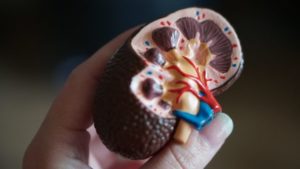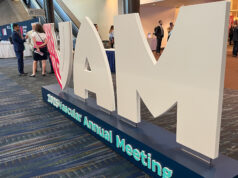 The American Journal of Kidney Diseases (AJKD) has published the National Kidney Foundation’s KDOQI Clinical Practice Guideline for Vascular Access: 2019 Update, a completely revamped set of 26 individual guidelines for clinicians that focuses on dialysis access choices tailored to individual patients’ goals and preferences, as well as clinical outcomes.
The American Journal of Kidney Diseases (AJKD) has published the National Kidney Foundation’s KDOQI Clinical Practice Guideline for Vascular Access: 2019 Update, a completely revamped set of 26 individual guidelines for clinicians that focuses on dialysis access choices tailored to individual patients’ goals and preferences, as well as clinical outcomes.
It is the third time the Kidney Disease Outcomes Quality Initiative (KDOQI) team has developed a vascular access guideline and the first time the guideline has been updated since 2006. About 500,000 patients in the U.S. receive dialysis treatment and in 2016 alone, nearly 125,000 people started treatment for end-stage kidney disease (ESKD).
This comprehensive update was developed due to the significant growth in the evidentiary database for vascular access. Hemodialysis access issues are managed by a multidisciplinary team of medical professionals, thus the working group that developed this update includes members representing not only clinical and academic-based adult and pediatric nephrologists, but also interventional nephrologists, radiologists, surgeons, and vascular access nurses.
“It is gratifying to see how much progress has been made in understanding how to place and maintain the various types of vascular access to maximize the effectiveness and reduce complications,” said NKF chief scientific officer Kerry Willis. “One of KDOQI’s most important contributions to improving outcomes for dialysis patients has been the stimulation of new research such as the studies used in creating this groundbreaking update.”
An important new approach introduced in this guideline is an individualized and comprehensive map for dialysis modalities for the lifetime of the patient called the “ESKD Life-Plan,” achieved by creating a “P-L-A-N” for each patient that considers the Patient’s Life-Plan and corresponding Access Needs. For each access, the “Access Needs” part of the P-L-A-N includes designing and documenting the patient’s access creation plan, contingency plan, succession plan and underlying vessel preservation plan. The end-result is a comprehensive vascular access management plan that will best suit the patient throughout his or her time with end stage kidney disease.
The Evidence Review Team from the University of Minnesota reviewed more than 4,600 peer-reviewed publications, of which 286 were included in the evidence tables. These evidence tables were used by the workgroup, chaired by Charmaine Lok from the University of Toronto, to develop this fresh and more patient-focused approach to vascular access care that takes into consideration each patient’s needs and preferences.
“The new guideline will have many benefits for patients on dialysis, including to help preserve vessels needed for successful future access creation and to minimize unnecessary access-related procedures and complications,” said KDOQI chair Michael Rocco.
NKF has produced clinical practice guidelines through KDOQI on all stages of kidney disease and related complications since 1997. Recognized around the world for improving the diagnosis and treatment of kidney disease, the KDOQI guidelines have changed the practices of numerous specialties and disciplines and improved the lives of thousands of kidney patients. All KDOQI guidelines and commentaries are published in AJKD.
“These Guidelines emphasize an integrated, individualized approach to patient care that promotes optimal dialysis access management based on the best available evidence,” said Guideline Chair Charmaine Lok. “It recognizes the need for further research, data, and timely revision that incorporates evolving practices, innovation, and new advances in vascular access. We are excited for clinicians to start using these Guidelines to help get the right access in the right patient at the right time for the right reasons.”
The guidelines will appear in the National Kidney Foundation’s AJKD today. AJKD is the leading kidney disease journal. It reaches thousands of healthcare professionals each month. To read more about the authors and to read the commentary, please visit: https://www.ajkd.org/issue/S0272-6386(20)X0004-7.












